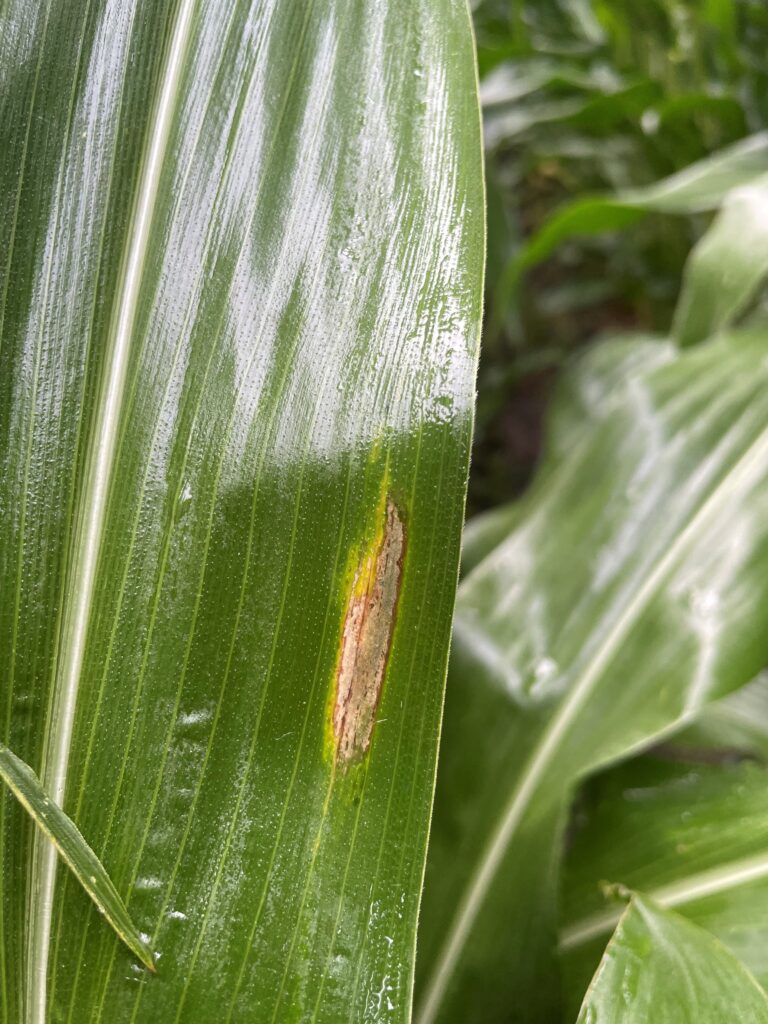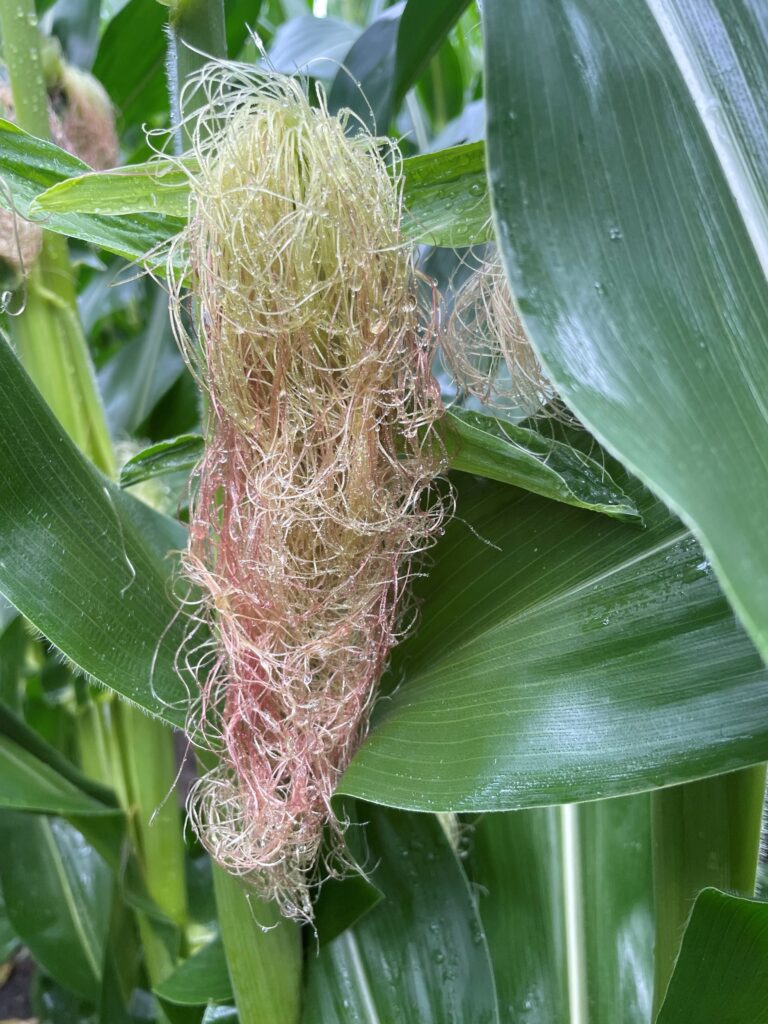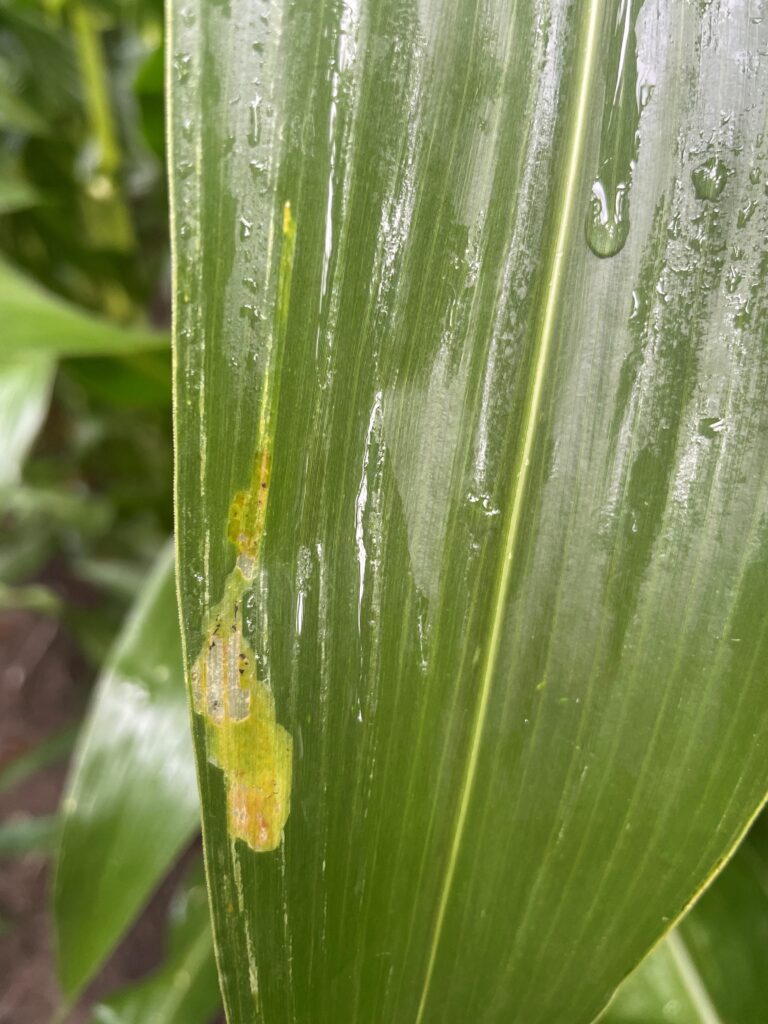Archive
If you find yourself wondering what happened when, look no further than the Crop Report Archive. We’ve compiled past reports, listing the most recent first. You can search by Region, Month, or Reporter to find information.



More hit-and-miss rainfall last week in NE Illinois as additional corn acres begin to reach VT (tassel). Areas that received rainfall are faring considerably better than those that did not. Corn growing in fields with gravelly knolls and lighter or sandy soils that did not receive recent rains is showing significant stress. Fungicide applications have started in the area. In scouting visits to R1 corn fields, the only disease noted was sporadic Northern corn leaf blight. This disease is recognizable by the cigar- or canoe-shaped lesions formed on leaf tissue. The causal pathogen for this fungal disease overwinters on corn leaf debris. Hybrid resistance is normally adequate for management of the disease, but substantial losses can occur with early infection and susceptible hybrids.
Interesting, but normally not economically important, leaf feeding was also noted in the corn. The corn blotch leaf miner is a small fly that deposits eggs on either the upper or lower corn leaf surface. After hatching, the larva tunnels in the leaf, feeding on the inner leaf tissue as it grows, leaving behind mines or transparent galleries. Eventually, the larva chews its way out of the leaf, drops to the soil, and pupates. I’m finding very limited leaf feeding, despite the presence of Japanese beetles, and no diseases at this point in the growing season in the soybean fields visited.


 and then
and then